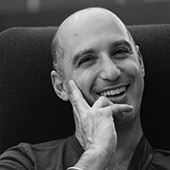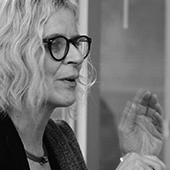What To Look For

There are so many diverse issues that can dramatically change the way we work, it is difficult to focus on one area. Here are some thoughts:
Carbon Neutral will be the next wave of code requirements to hit architects. [Editor’s Note: For the coming impact of the ZERO Code, see “Zero Carbon Architecture: the Business Case.”]
Automation in the architect’s office and in the building process will emerge dramatically. On a worldwide basis, Jojo Tolentino, a Philippine Architect, is kind of a BIM rock star. He speaks at a Graphisoft conference here. Beginning at 17:45 in the video, he describes how his firm has automated construction documentation; at 23:22, he discusses how they utilize virtual reality and gamification; at 26:15, he reviews the impact of integration on business.
Artificial Intelligence is happening in the universities but few practitioners seem to be talking about it. I suspect the big firms are working on it but keeping their efforts quiet. [Editor’s Note: Season Four of arcCA DIGEST will be about data, connectivity, and AI.]
Sales Tax on Services keeps coming up in the California Legislature. Sooner or later, some part of it will stick. This could have a significant impact on the profession. When is it collected? (Prior to getting paid?) How are professional consultants handled? What if a project is abandoned? Mark Christian, AIA California’s Director of Government Relations, is the expert on this topic.
Personnel and Staffing: Rapidly exiting Boomers and advancing Millennials, the gig-economy and global-outsourcing will change the way we work.
What To Do
Phil Bernstein: Get a New Business Model, in Architectural Record
Richard Pollack: Sell & Recruit
Laura Weiss: Lead Through Service Design
Benjamin Parco: Tell Good Stories
Karin Hibma: Reimagine the Future

There are several core components of starting and then staying in business. The first component was perfectly addressed in a remark attributed to Philip Johnson. He was the commencement speaker at an architectural school graduation, and the mother of a new graduate asked him, “What is the first and most important job that my son should do as a newly minted professional?” He answered, “The very first job is to get his first project.” She then said, “OK, I understand that, but what’s the next most important thing?” Johnson replied, “Getting the second project.”
A second critical component is to always be recruiting for your firm, whether you need staff immediately or not. In order to provide the best services, which then allows for referrals and new work, you must have the best staff to deliver the design and documentation. I discovered as I was starting my firm in 1985 that I was pretty good at selling – and I prefer that term over “business development.” From previous relationships with clients, I was able to secure some amazing early projects. But the only way to do them was to have great staff – so I began to seek out the best people I could find.
Another learning moment was discovering that the business improves by recruiting colleagues that are smarter than you, and providing the infrastructure and culture that help them succeed. (An outgrowth of this approach is that it will create an easier path to future ownership transition.)
We also need to appreciate that our clients are keenly focused on business, whether it’s the homeowner of a residential remodel or a corporate client building a high-rise. Too often, we are thought of as a “necessary evil,” owing to missed deadlines and budgets, so we need to get on our client’s wavelength and put the project’s business drivers right in the architectural program – not as an afterthought.
The overarching issue is that an architect must understand that we are not running design businesses – we are running businesses that do design. The distinction is critical. Since we aren’t properly educated in school to understand business and finance, these topics need to become an immediate focus, before you even think of starting a firm.

Let’s face it: architects are service providers, not builders. Yet architects and the media almost exclusively focus on the building artifact as the primary source of value delivered, and firm portfolios as the primary differentiator. We rarely acknowledge (and provide minimal education for) the leadership skills required to guide clients and other stakeholders through a whole series of complex and often unfamiliar decision-making activities that affect a successful outcome. The overall experience of engaging with architectural services has evolved very little.
Therein lies a challenge and an opportunity. Clients don’t simply purchase or consume a service; they also participate in creating it – making it slower or faster, better or worse, cheaper or more expensive. Think about this during your next experience at an airline ticket counter, as you observe a frazzled agent tangle with an irate passenger. Architects also create service interactions – indeed, entire service journeys – that are mediated by one or more design artifacts (buildings in our case, aircraft in theirs). As a result, the service experience can heavily influence the overall value that the marketplace assigns to architectural services, just as it has for numerous organizations across a range of industries since formal approaches to service design emerged more than a decade ago.
Attention to service design is also a potential antidote to concerns that the architecture profession is ready to be disrupted by artificial intelligence and technological automation. In “Where Machines Could Replace Humans – and Where They Can’t (Yet)” (McKinsey Quarterly: July 2016), Michael Chui, James Manyika, and Mehdi Miremadi reference a study on the sectors and activities that are the most threatened by automation and those that are not. The article makes the point that examining activities, not occupations, is the more accurate lens for assessment, with activities that “require application of expertise to decision-making, planning, and creative tasks” being the least susceptible to disruption. To illustrate how service delivery can serve as a shield against automation, the article invokes the world of finance and its reliance on professional expertise. The potential exists for automation technology to support value creation in financial services, as it would allow bankers to “focus more of their time on advising clients rather than routine processing. Both the customer and the (banking) institution get greater value.”
What this suggests for the architecture profession is that it, too, has an opportunity to be much more deliberate in how clients and other stakeholders are engaged in the delivery of its work. Architects must take seriously the idea that they design and deliver a whole series of human interactions that create (or suppress) value long before a physical structure emerges. We must deliberately design those human interactions with the same care that we design the physical environment. If we cannot deliver value to our clients, we will not survive – not because of technology or economics, but because we did not recognize the importance of leading through service design.

If you haven’t noticed, many of the talents and skills that once made architects special have been adopted, operationalized, rebranded, and monetized by the likes of IDEO and Google, with “new” processes like Design Thinking and Design Sprints taking the place of what has always simply been the design process.
I was recently asked by a client to present my ideas on Design Thinking. Initially I wasn’t sure that I was even qualified to speak on the topic. Then I did some reading and realized that I already knew this stuff. I had been practicing “design thinking” for over three decades without even knowing it. That powerful rebranding effort had fooled me into believing that I was somehow missing some newer, more valuable skill set when, in actuality, I was an expert. As an architect, I had been marginalized without even knowing it.
Oftentimes, this is what “progress” looks like. Tried and true ideas are distilled, repackaged, and then retransmitted out into the world as something new. Don’t believe the hype. The architectural design process is as relevant as it’s ever been. The problem is that it often remains hidden.
Perhaps our sometimes-introverted process is to blame. We’ve been doing this stuff all along, often out of sight, yet nobody knew about it. As a profession, we’ve done a terrible job of daylighting our process, telling our story, and making clear the value of our craft.
Remember in school when design critics would get so upset when someone failed to bring their study models into the final review? Why? Because that’s terrible storytelling. By exposing the design process, we’re able to simultaneously create and demonstrate value. When people are enticed by the things we make, things that communicate insight, they’re drawn in. With curiosity present, all we then need to do is to lay it all out in a logical and compelling way. Voila! Storytelling. Human beings have thrived on it for millennia, from cave paintings to Instagram.
You’ve heard of “experiential retail,” where you get to watch, almost participate in the making of a thing, while simultaneously shopping for that same thing? This is storytelling, and people love it! So let them into the ways in which you’re thinking about their problems. Show them what your mind sees and why it matters. Because, from where I sit, it doesn’t appear as if the built environment is getting any better. Architects are needed. It’s just that nobody knows it.

“Staying in business” ultimately means “staying alive.” Most, most critical for staying in business today is thinking, and acting for the sustainable long-term. We are in service professions; our clients look to us for leadership and guidance, to be oracles and to auger answers and inspiration. Clients have questions; we stay in business by leading, being out ahead with answers. Elegant questions design answers.
Change happens; deep change happens inexorably. Here at the edge of the Anthropocene, the times portend a sea of social change, of recognizing how to both retrofit the last century’s rush of manufactured control of the environment as an immature accomplishment, and to act for the longer term, with an environmentally integrated perspective. Our businesses will either be victors because of our ability to adjust, or we will be casualties of our inaction, suffering the vast revenge of nature and the physics of carbon dioxide. As Gandhi says, “Be the change.”
Bronwyn Barry of the North American Passive House Network says that architects have a “responsibility to ensure buildings really deliver what they should with regard to stewardship of the environment . . . . in order to stay in business, architects will need to be able to deliver buildings that meet the climate action policies now being mandated by cities. New York City just passed a big one a few days ago. They’ve required that all larger buildings be retrofitted to meet mandated carbon emissions caps, or have substantial fines levied upon them. Architects who can’t deliver on this will go out of business, or be relegated to work on smaller buildings.”
Being compelled and terrified and obsessed with problems larger than we can see the edges of gives us real work to do, to shape a future we can stay alive in. To stay in business, embrace the fear. Flourishing businesses maintain generous and forward-looking perspectives and see ways of imagining other possible futures, other ways to begin to live, and ways to get our clients and ourselves ready.
Staying in business? Our business is reimagining the history of the future.
From arcCA DIGEST Season 2, “Staying In Business.”





